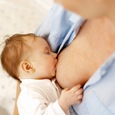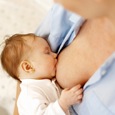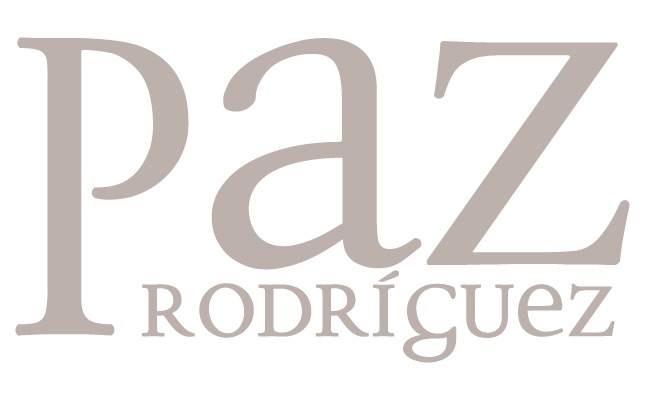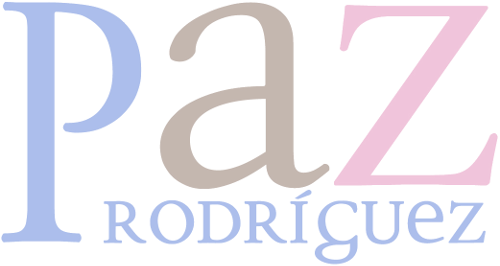 On having sucked, the baby guarantees a suitable production of milk and, by night, the level of prolactina increases. How do they reconcile the needs of the child with the rest of the mom?
On having sucked, the baby guarantees a suitable production of milk and, by night, the level of prolactina increases. How do they reconcile the needs of the child with the rest of the mom?
In the first weeks, the mother organism calibrates the production of milk depending on the needs of the child. The more the baby sucks,
 Al succionar, el bebé garantiza una adecuada producción de leche y, de noche, el nivel de prolactina aumenta. ¿Cómo se compaginan las necesidades del niño con el descanso de la mamá?
Al succionar, el bebé garantiza una adecuada producción de leche y, de noche, el nivel de prolactina aumenta. ¿Cómo se compaginan las necesidades del niño con el descanso de la mamá?
En las primeras semanas, el organismo materno calibra la producción de leche en función de las necesidades del niño. Cuanto más succiona el bebé, thanks to the frequent captures, the more milk produces the chest. – to favor a good march of the lactation and to guarantee to the baby the suitable nutrition, the captures can change from eight to 12 during 12 p.m..
– During the night, the level of prolactina, the hormone responsible for the production of milk, is high, and the baby finds food galore.
– During the phase of calibration, the night captures are so important that, in the cases (few ones) in which the newborn child does very long pauses (of more than 4-6 hours), she will be the mom who offers him the chest to stimulate him.
– For what concerns the sleepy babies, it might be necessary the milk to be extracted manually or with the help of a milkextract, at least once in the night, in order to drenar the chest and to support the production.
– The night lactation is a valid way of preparing the mammary obstructions and the mastitis, which are in the habit of being favored by a too long interval between captures.
This way, one rests better
Several studies have revealed a very interesting information: the moms who give the chest rest better.
– The pace of the dream synchronizes with that of the baby. In addition, the prolactina, which enters traffic during the capture, favors the easing of the mom and the baby. Hereby, in the majority of the occasions, the small one he falls asleep to the chest and the mom returns to take the dream rapidly.
-The prolactina guarantees to the woman a qualitatively better dream, reason for which, even waking up during the night, the mom who gives the chest rests better.
– Besides these physiological mechanisms, the great comfort of the lactation also helps the mom, since it allows him to satisfy the needs of the baby without having to get up of the bed. On the other hand, for the moms who do not give the chest, you will wake nocturnes up they need more implication, in terms of time and of effort.
– The chest also contributes to the rest when the reason of the awakening is not the hunger. When it is in arms of mom, the small one he feels trusting and, in general, it calms down rapidly.
http://www.mibebeyyo.com/bebes/sueno/toma-nocturna-5471
gracias a las tomas frecuentes, más leche produce el pecho.
– Para favorecer una buena marcha de la lactancia y garantizar al bebé la nutrición adecuada, las tomas pueden variar de ocho a 12 durante las 24 horas.
– Durante la noche, el nivel de prolactina, la hormona responsable de la producción de leche, es más alto, y el bebé encuentra alimento en abundancia.
– Durante la fase de calibración, las tomas nocturnas son tan importantes que, en los casos (pocos) en los que el recién nacido haga pausas muy largas (de más de 4-6 horas), será la mamá quien le ofrezca el pecho para estimularle.
– Por lo que respecta a los bebés dormilones, podría ser necesario extraerse la leche manualmente o con la ayuda de un sacaleches, al menos una vez por la noche, con el fin de drenar el pecho y mantener la producción.
– La lactancia nocturna es una forma válida de prevenir las obstrucciones mamarias y las mastitis, que suelen estar favorecidas por un intervalo demasiado largo entre tomas.
Así, se descansa mejor
Varios estudios han puesto de manifiesto un dato muy interesante: las mamás que dan el pecho descansan mejor.
– El ritmo del sueño se sincroniza con el del bebé. Además, la prolactina, que entra en circulación durante la toma, favorece la relajación de la mamá y el bebé. De esta manera, en la mayoría de las ocasiones, el pequeño se duerme al pecho y la mamá vuelve a coger el sueño rápidamente.
– La prolactina garantiza a la mujer un sueño cualitativamente mejor, razón por la que, incluso despertándose durante la noche, la mamá que da el pecho descansa mejor.
– Además de estos mecanismos fisiológicos, la gran comodidad de la lactancia también ayuda a la mamá, ya que le permite satisfacer las necesidades del bebé sin tener que levantarse de la cama. En cambio, para las mamás que no dan el pecho, los despertares nocturnos requieren más implicación, en términos de tiempo y de esfuerzo.
– El pecho también contribuye al descanso cuando la causa del despertar no es el hambre. Cuando está en brazos de mamá, el pequeño se siente confiado y, en general, se tranquiliza rápidamente.
http://www.mibebeyyo.com/bebes/sueno/toma-nocturna-5471

